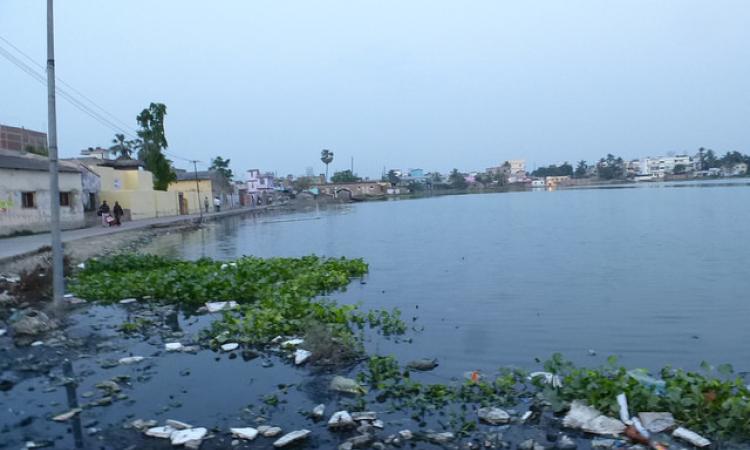
Vibrio cholerae is responsible for 100,000 -120,000 deaths annually, worldwide. [1] Commonly found in ponds, rivers and brackish areas, the bacterium finds its way into humans through contaminated food and water. And the result? Cholera. Characterized by severe diarrhea, vomiting and dehydration, cholera is capable of killing the affected individual within a few hours, if left unattended [1]. India recorded 5,155 cases of cholera in 2010 alone [2].
Surface water such as those from ponds and lakes are usually contaminated with this bacteria. In rural areas, where treated water supply is not as popular, people use untreated water for cooking, washing and bathing purposes, quickly spreading the infection to the community at large.
West Bengal and cholera
Cholera is a huge public health threat for the state of West Bengal. The research article titled ‘Contaminated Pond Water Favors Cholera Outbreak at Haibatpur Village, Purba Medinipur District, West Bengal, India’ published in the Journal of Tropical Medicine, charts out the course of the study aimed at looking into the reasons for the spread of cholera in one of West Bengal's rural hamlets, as well as recommendations to prevent future outbreaks.
While 192 cases were reported in 2010, 2011 witnessed 11 diarrheal outbreaks in Purba Medinipur district alone, none of which were confirmed through laboratory diagnosis. Health workers noticed a spike in Haibatpur village in recent years and an investigation ensued to determine the causes, identify the risk factor and come up with ways to control the menace.
The Haibatpur study
A door to door survey was conducted to accurately note down the cases of diarrhea in the community and a distribution map was prepared. A close eye was kept on any influx in population. Diarrhea case records for over three years were looked into.
Rectal swabs were collected from affected individuals for laboratory study. Drinking water samples from two ponds and three tube wells were collected and sent for analysis. Researchers also conducted a physical study of the water supply, storage and drainage systems in the area along with interviewing locals’ on their water, sanitation and hygiene practices.
As most of the tube wells in the villages were defunct and the groundwater was saline, residents were forced to use surface water from nearby ponds. This gave rise to the working hypothesis that usage of pond water was in some way related to the spread of cholera in the community. A case control study was conducted to test this hypothesis.
Coliform infested ponds
A high number of diarrhoea cases were reported than expected and more men were affected than women, and more men from the age group of above 60 were affected. Laboratory results showed high levels of coliform in the pond water, indicating fecal contamination. In contrast, the tube wells were found to be free of coliform contamination. Disease distribution maps revealed that most of the affected individuals lived close to the contaminated ponds.
Case control study results pointed out the fact that those infected with the bacterium were more likely to have used pond water for cooking as well as for washing utensils. The infection was less likely in those who washed their hands after defecation.
The curious case of Panta Bhat
Fermented boiled rice popularly known as ‘Panta Bhat’ is a local favourite. While villagers walked close to three kilometres to fetch clean drinking water, they used pond water for fermenting the rice.
Vibrio cholera survives in cooked dishes for over five days. Consumption of food prepared using water contaminated with fecal coliform helped spread the disease. Similar cases have been noted and studied in other countries including Bangladesh and Kenya as well, where similar fermented preparations are quite common.
Keeping cholera at bay
The cooking and hygiene practices of the villagers were closely observed during the course of the study. This helped in coming up with suggestions to prevent similar outbreaks in the future.
- Educating people on the harms of untreated pond water way was seen to be key in bringing about a change in their routine.
- Disinfection of the pond was given priority and villagers were encouraged to do the same periodically.
- The benefits of hand washing post-defecation and before consuming food was clearly spelt out.
- Villagers were asked to repair defunct tube wells in order to ensure an alternative source of safe water.
- Oral cholera vaccines need to be administered for high risk individuals in high risk regions.
- Research needs to be undertaken to study the cultural behaviors of the community during an epidemic outbreak.
References:
1. World Health Organization (WHO) Fact sheet on Cholera. (Accessed on February 20, 2015)
2.World Health Organisation (2010) Weekly epidemiological record. (Accessed on 24th February 2015).